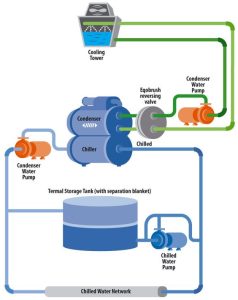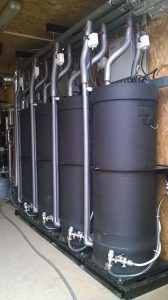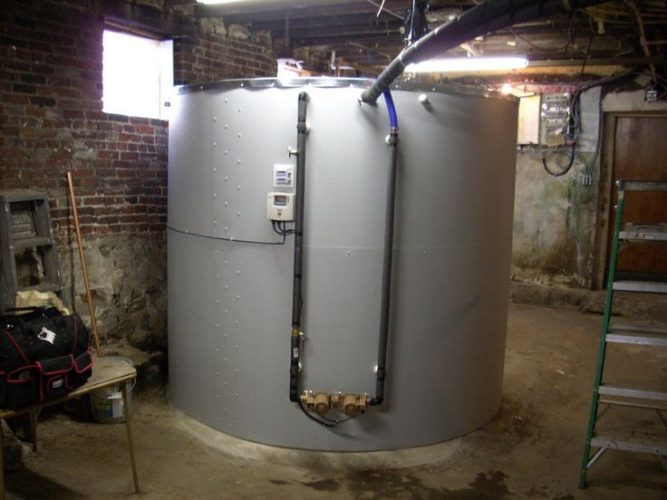Thermal storage emerges as a key player in providing sustainable, reliable, and cost-effective power for industrial processes. It stands at the forefront of the chemical industry, a vital input for numerous processes. According to the International Energy Agency (IEA), industrial heat is not only a substantial emission source, with fuel combustion contributing three-quarters of CO2 emissions in this sector, but also an underestimated challenge in our battle against climate change. It poses a stumbling block for industrial decarbonization and reducing dependence on fossil fuels.
Amid current geopolitical uncertainties, the lesson learned is the imperative need to expedite the transition away from fossil fuels. This transition is not only crucial for averting the destructive impacts of climate change but also ensuring stability, energy security, and affordable energy prices.
Addressing the Energy Trilemma in the Chemical Industry
Numerous countries brace for a challenging winter, with warnings of power outages and surging energy prices. It’s a critical moment to deploy all available solutions to ensure uninterrupted industrial and business operations. Thermal storage emerges as a effective solution, integrable into factories within less than 12 months. It electrifies the process heat from fossil energy and stores it for later use, reducing industrial reliance on natural gas. With this technology, companies can swiftly control their heat and steam supply, maintaining manufacturing processes with a significant reduction in fossil fuel consumption. Essentially, it addresses all aspects of the so-called “energy trilemma” by enhancing supply security through green thermal energy and steam production from locally available renewable energy sources, lowering energy costs, and reducing production carbon intensity.

Concepts of Thermal Storage and On-Demand Heating
The versatility of thermal storage, especially in the chemical industry, makes it a standout technology. It can address a spectrum of industrial applications, including electrification, waste heat recovery, and balancing steam grids.
Electrifying processes through thermal storage can entirely eliminate the need for fossil fuels. Thermal batteries can connect to on-site renewable energy devices, securing non-peak power from renewable sources, ensuring prolonged energy reserves. They can provide high-quality, low-carbon steam (saturated or superheated) for all industrial manufacturing processes. Thermal batteries enable companies to purchase renewable energy in bulk at lower costs and store it for later use, allowing on-demand heating.
Beyond electrification, thermal storage unleashes the untapped potential of waste heat. Often, valuable high-temperature heat from industrial processes cannot be reused and is released as waste heat. Thermal batteries store and preserve this heat, increasing grid independence and mitigating risks associated with energy market fluctuations.
In typical chemical plants, cooling processes for exothermic or endothermic reactions must be carried out continuously, adding a significant cost and resource burden. Batch processing or interruptions typically lead to supply-demand imbalances, necessitating the startup of backup boilers or wasting steam. Thermal storage facilitates steam grid balancing by storing, time-shifting, and balancing high-pressure or medium-pressure steam, enabling on-demand supply to local steam grids.
Architectural Aspects of Thermal Batteries
In an era where energy efficiency takes precedence, these use cases can significantly impact the energy security and affordability of the chemical industry. These operational models serve as applied examples currently implemented by ENERGYNEST, a thermal battery manufacturer with offices in Germany, Norway, and Spain.
ENERGYNEST’s technology utilizes a mixture called Heatcrete©, comprising steel and concrete. Heatcrete© is a high-performance concrete composed of 75% quartz aggregate and 25% additives, cost-effectively manufactured with outstanding thermal properties. A steel-bearing structure encases carbon steel pipes embedded with HEATCRETE®, through which heat transfer fluid charges and discharges the storage system at pressures of up to 160 bar. Individual modules are installed in standard 40-foot containers, offering thermal energy capacity of up to 2 megawatt-hours.
ENERGYNEST’s ThermalBattery™ system is modular, scalable, and designed specifically for industrial applications. Crafted from abundant, recyclable, and harmless geotechnical materials, it is easy to manufacture using local labor and materials, minimizing transportation. Its modular structure allows the system to scale up to gigawatt-hour ranges.

Unleashing Energy Flexibility
At Yara International, the world’s largest fertilizer manufacturer, located in Porsgrunn, Norway, ENERGYNEST has showcased the practical workings of the technology by integrating a 4 MWh thermal battery directly into the facility’s steam grid.
This renewable energy storage system provides greater flexibility to the factory by balancing local steam production and reducing excess steam, ensuring more efficient utilization of fossil fuels to generate additional steam. This form of steam grid balancing guarantees the need for less fossil fuel to produce extra steam, balancing fluctuations in production and energy feed-in.
Ready-Made Solutions
Current price pressures and rising CO2 prices mean that industries must act swiftly: rapid implementation and expansion of climate-friendly carbon capture technologies are essential. This means one thing – there’s no better time than now to initiate conversations about industrial heating for your company. Thermal storage is commercially viable, readily available, sustainable, quickly implementable, and scalable. Hence, in the current energy crisis, thermal batteries can play a pivotal role in ensuring industrial heating and becoming a core component of low-carbon production processes. Thermal storage should be on the agenda for every chemical company. Why not include it in the agenda for your next management meeting?
Energy savings and on-demand scheduling are crucial for navigating the next two winters and moving towards a fossil-free world.
